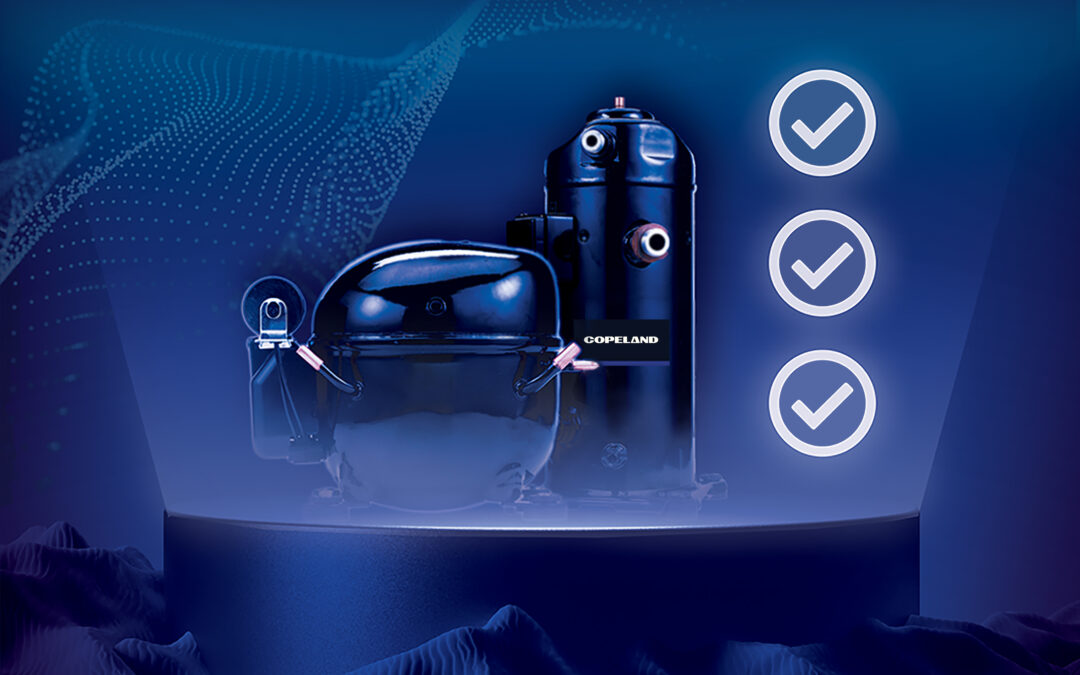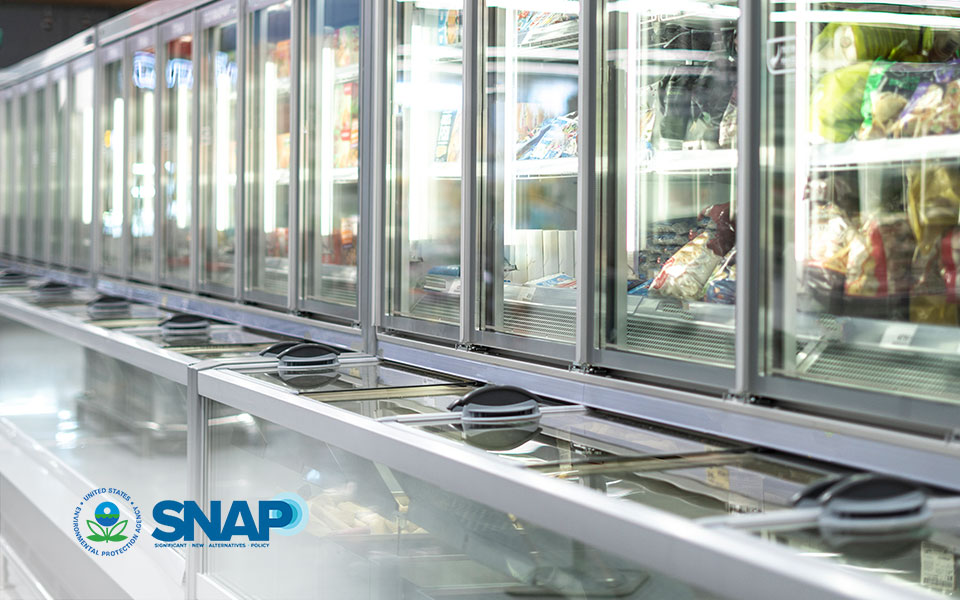*On June 1, 2023 Emerson’s Climate Technologies business became a new standalone company – Copeland. Though our name has changed, we are building on more than a century of HVACR innovation and industry leadership, and Copeland continues to offer the same products, industry stewardship, and learning opportunities you’ve grown to trust. Information found on this webpage posted before June 1, 2023 may contain our old name or branding, but you can be at ease knowing it was created with the knowledge and expertise of Copeland.
Regulations governing the use of refrigerants in commercial refrigeration remain in a state of flux. While the United States currently lacks a federal mandate for phasing down hydrofluorocarbon (HFC) emissions, many states are already vowing to adopt their own HFC phase-down initiatives. In a new article in RSES Journal, I highlight several proven sustainable refrigeration strategies that operators should begin evaluating now as they prepare for a future that will be fueled by systems that utilize refrigerants with lower global warming potential (GWP). Read the article here.

It’s clear that the future favors more environmentally friendly refrigeration systems. But the lower-GWP refrigerants and emerging architectures that comprise these systems are up for debate in the United States, where state-led efforts to curb climate change could result in a patchwork of environmental regulations.
The good news for owners and operators is that, even absent federal guidance, component manufacturers, OEMs, contractors and end users are leading the charge. For more than a decade, industry stakeholders have been developing and fine-tuning lower-GWP refrigerants and corresponding technologies to satisfy a range of applications, store formats and corporate sustainability goals.
The resulting proliferation of sustainable refrigeration systems is providing operators with more options than ever before. But as the one-size-fits-all solutions of the past give way to a broader array of strategies, operators need to become experts on alternative refrigerant technologies and architectures — all while trying to predict where future environmental regulations will land. While this may sound like a daunting task, it can be made easier by building a baseline understanding of current and emerging systems.
An expanding set of sustainable refrigeration strategies
Whether motivated by potential regulatory changes or corporate sustainability goals (or both), operators have no shortage of lower-GWP refrigerant systems from which to choose. Proven, viable alternatives to HFC-based systems already on the market include:
-
- Lower-GWP A1s (HFO/HFC blends): By blending hyrdrofluoroolefins (HFOs) with HFCs, refrigerant manufacturers have created a new generation of lower-GWP A1 alternatives. These refrigerants do not satisfy the very low-GWP levels of many global HFC regulations, but they do allow for a gradual transition to lower-GWP refrigerants. Refrigeration architectures that use A1 refrigerants include macro-distributed (large) integrated cases, micro-booster (distributed) and small-charge distributed cases.
- A2L HFO blends: New synthetic HFO blends offer widespread applicability within commercial refrigeration for operators seeking lower-GWP alternatives. U.S. safety codes and standards are still catching up to their use, but many operators anticipate A2L blends will emerge within the next several years. Both macro-distributed and micro-booster architectures that use A1 refrigerants can be used with some A2L blends, enabling operators to maximize their investment as they adopt lower-GWP alternatives.
- Propane (R-290): This natural refrigerant is energy-efficient and has a very low GWP of 3. Because it’s classified as an A3 (flammable) refrigerant, U.S. building codes currently limit its use to small-charge applications — and that may require more compressors than other approaches. R-290 can be paired with micro-distributed, R-290 integrated cases, which allow for flexibility in store layouts and use 90% less refrigerant than centralized systems.
- CO2(R-744): A proven alternative in European and North American applications, CO2 is nonflammable and nontoxic. It also has a GWP of 1, meaning it satisfies current and potential future regulatory requirements. It can be used with CO2 transcritical booster systems — where CO2 provides both low- and medium-temperature cooling — and CO2 sub-critical (cascade) architectures that utilize an HFC or HFC/HFO blend on the medium-temperature side of the system. Both systems are particularly beneficial for large-format supermarkets where a centralized architecture is preferred. However, due to their higher pressures, these systems require access to a trained, skilled workforce for service and maintenance.
Staying ahead of the curve
Emerson is at the forefront of engineering a future that supports the entire spectrum of refrigeration strategies. We’ve been partnering with equipment manufacturers and end users alike to develop future-ready, low-GWP refrigerant technologies to support operators at every stage of their transition to a lower carbon footprint.
From our wide range of energy-efficient compressors, flow controls and smart electronics to fully integrated solutions, we’re providing our customers with the ability to implement sustainable refrigeration strategies that support their unique facility requirements, business objectives and regulatory requirements.

Address Efficiency Mandates with Compression Technologies
Strategies for complying with DOE and ENERGY STAR® in self-contained and remote condensing units...

EPA SNAP Rule 26 Approves, Modifies Use Conditions for A2L and A3 Refrigerants
On May 28, the Environmental Protection Agency (EPA) pre-published its Significant New...

Refrigerant Transition Highlights the Importance of Leak Detection
*On June 1, 2023 Emerson’s Climate Technologies business became a new standalone company –...
